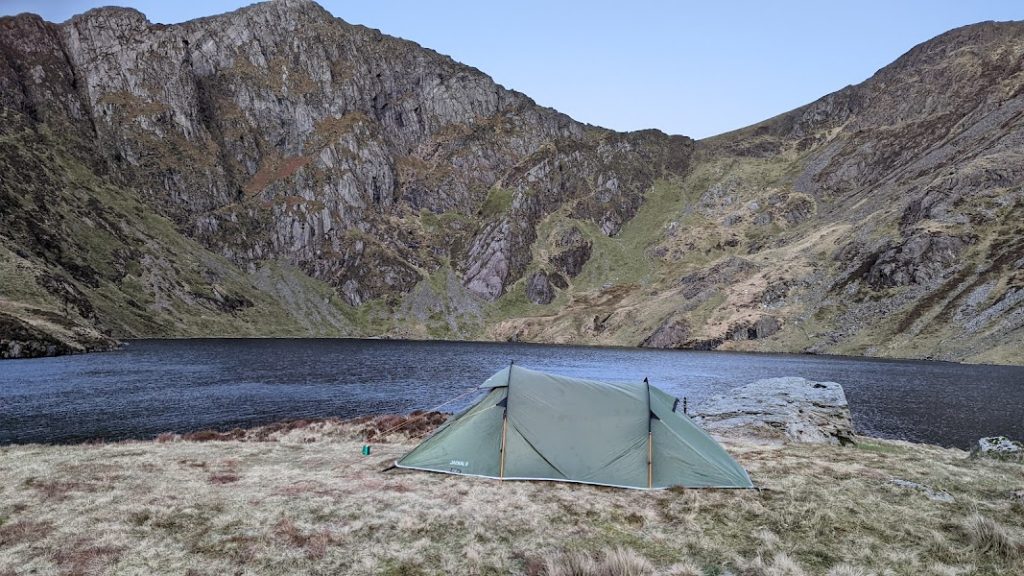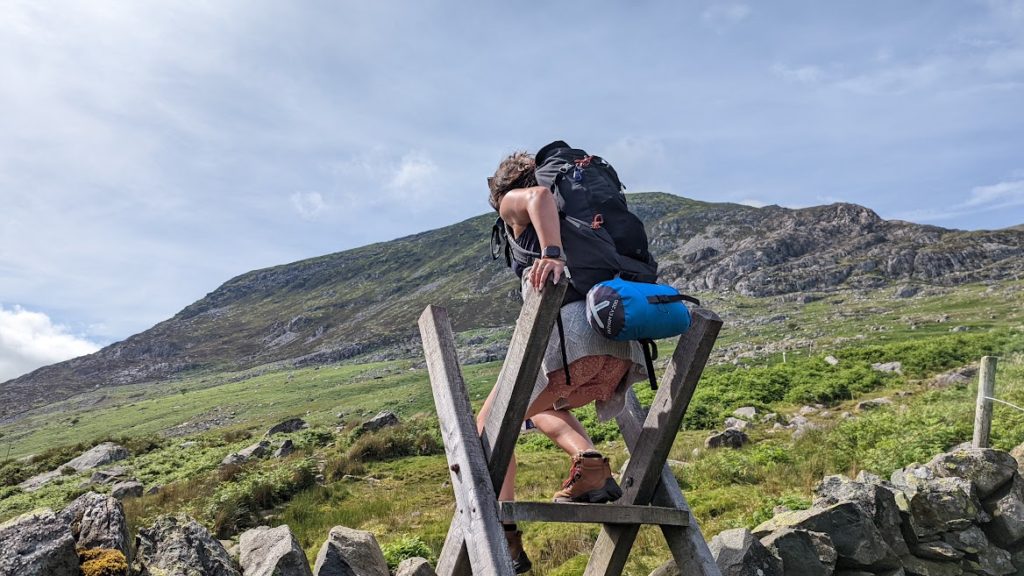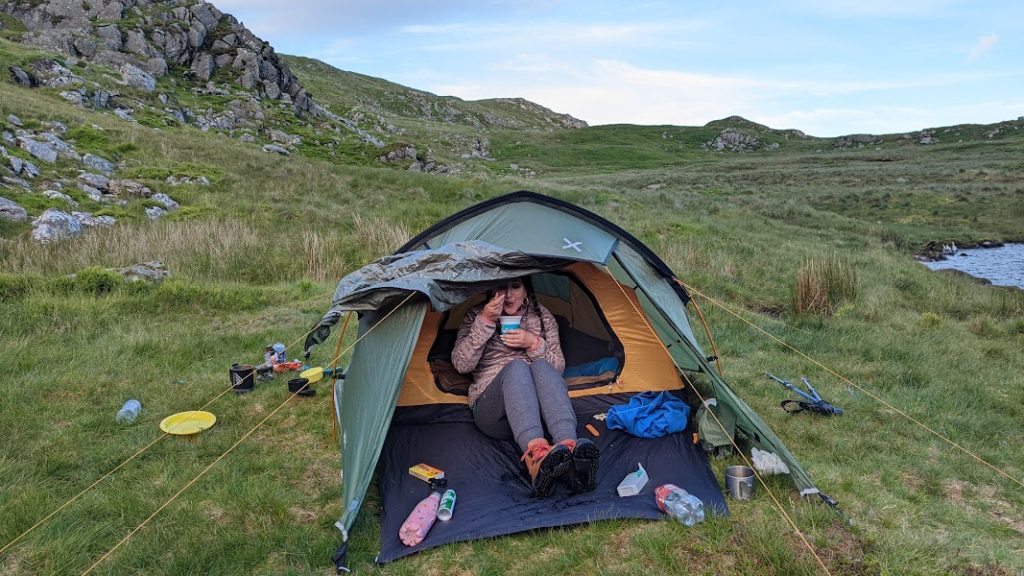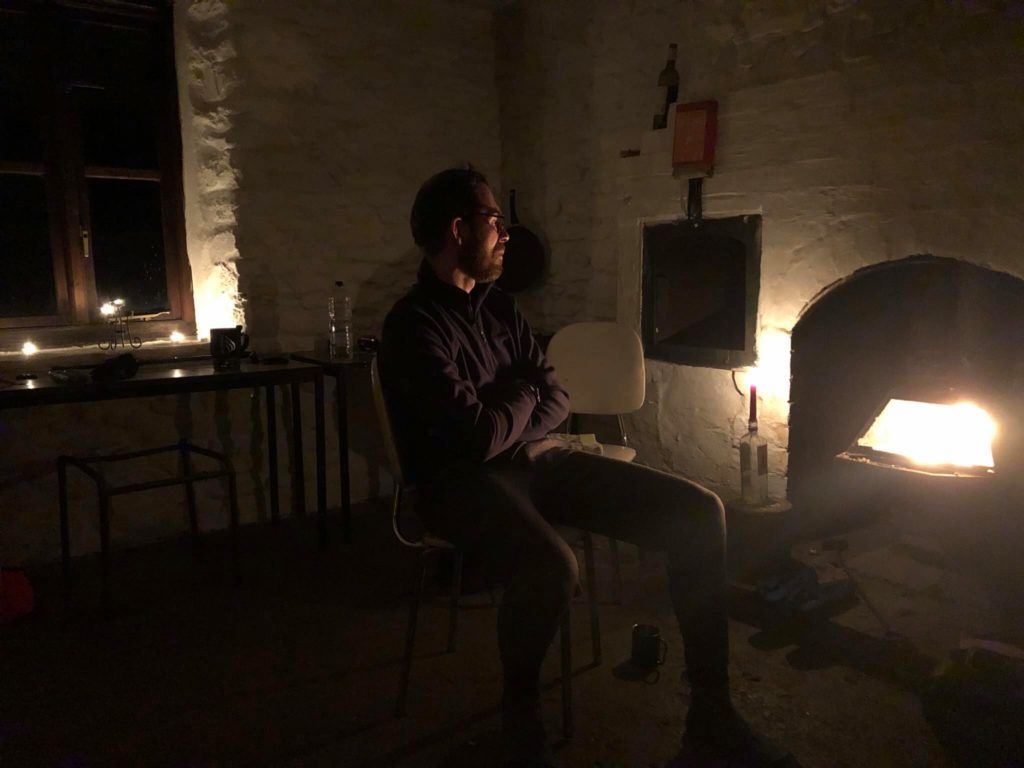If you’re taking the time to read this article, then I figure that you adore wild camping and want to wild camp successfully with your non-camping partner. You may have already shared stories and photos from your trips and made them curious. Perhaps they have even expressed an interest in coming along with you on the next adventure just to see what the fuss is all about. Congratulations if you find yourself in this position. You’ve got yourself an adventurous partner, who is willing to step out of their comfort zone both for themselves and for you.

It’s for this reason then that you want to make their first wild camping experience as enjoyable as possible. Get it right and they may well fall in love with what we already know is a brilliant hobby. You could well have a travel companion for life. Get it wrong however and it might prove be a rather strained experience with them expressing their hatred of canvas shelters and the fact they will never go near one ever again.
Speaking From Experience
I write this piece from personal experience. I recently took my girlfriend camping in Snowdonia and only wish an article like this was available then. If I had read the advice I am about to give you now, then perhaps my girlfriend Louise would be coming with me on my next trip. Instead she is wondering how much money she might get back if she sells all her new camping gear on Ebay. Needless to say, I made just about every mistake in the book and could have done things a lot better. I’m going to pass on my tips now, so hopefully your experience is a lot more positive than mine was.
Pick An Easy Route
Unless your partner is already a keen hiker and has great fitness, then plotting an easy route to your destination is crucial. They may not be used to carrying a heavy pack, which can make even the easiest path seem tougher than it is.
You may well be using an OS Map to sort out the route you’ll take. It is quite easy to calculate how far the route will be from the scale provided; remember that distance is only part of it. Our trip to Snowdonia only involved a 1.5km walk, which I thought was perfect. Even as a geographer though I forgot about one very important thing- the terrain.

We ended up having to scale the equivalent of The Shard in that small distance. I enjoyed it, but then again I’m used to it. Louise found it tough going almost from the start and just found the entire journey an utter slog. She tends to go very quiet when unhappy and in this instance she could have challenged even a monk in a sponsored silence. Things were tense indeed and I didn’t know what to say to cheer her up.
Think carefully about how fit they are and maybe have a chat about just how much climbing they wish to do. Communication is key. In short though, I’d suggest keeping the first walk short and fairly flat. Leave summit camps and those by high mountain tarns until the next one. This camp is no place for you to try and be a hero.
Take A Well Trodden Path
I’m sure you’re already used to using OS Maps and recognise the different types of paths marked out. If you’re not overly familiar, then generally the smaller the dashes are that mark its route, the less reliable the path is. This is especially true if you’re heading to a lesser-known destination like The Cambrian Mountains in mid-Wales.
I’ve learned the hard way that paths marked on a map can suddenly vanish and you can be left on a boggy moorland wondering which way to go. This is annoying on your own, but it can become down right stressful when you have your partner in tow. They may well be looking to you for guidance and might see you as some sort of expert. It will dent your pride as much as anything to have to admit you don’t have a clue where you are. If they end up with wet feet then that’s a whole other issue again. Be warned.

You are probably best taking your partner somewhere you’ve been before. You might not like re-visited spots you’ve already visited, but you’ll know the route and just how tough the terrain is. Show them some photos too beforehand and that will put their mind at rest even more. I’ve figured now that surprises are good at Christmas and birthdays rather than in the wilds of a mountain range.
The Issue Of Weight
I’m not referring to how your partner might view themselves on the trip. They will look positively hot in their outdoor gear. I am of course drawing attention to all of the gear that needs to be carried to the camping spot.
It is surprising just how heavy a backpack can become when loaded with a tent, stove and everything else. While this isn’t too much of a problem if you’re strong and used to carrying weight, it is a totally different issue if travelling with somebody who isn’t used to it. Louise is five foot two and while I enjoy teasing her on occasion about this and her size four feet, it does make carrying gear an issue.
On our trip I tried to carry as much as I could. All Louise had to carry was a sleeping bag, mat, water and spare clothes. I figured that would be easy, yet it still proved very challenging for her. If at all possible, try to carry everything. It’ll save you a trip to the gym and make your partner much happier as they try to fight gravity without having half a house attached to their back!

Check The Weather
I always know what the forecast is. I don’t work for the Met Office, but if I was better at maths and physics, then I reckon I would do. I’ve always loved the weather and even now watch the forecast at least once a day if possible. Yes I’m perhaps a bit odd in this respect, but I don’t care. The old weather forecasters from my childhood like Michael Fish and John Kettley are and always will be heroes in my eyes.
I digress slightly, but my point here is that you should have a good idea what the weather forecast is, especially temperature and wind. You need to be especially alert to changes that occur as you climb. Roughly speaking, the temperature decreases by around one degree celsius for every 100 metres you climb. That means that the temperature on Snowdon’s Summit will be around ten degrees colder than at the bottom. That makes a big difference any time of the year, but is most noticeable in the colder months. It can be quite pleasant low down and be well and truly Baltic at higher altitudes.
Wind also increases the higher you go. Why do I mention these points? Clearly your partner wants to be comfortable on their first trip and being warm is key to this. Once you’ve settled in at camp and you’re not as active, it’s amazing how quickly you can get cold. The nippier it is, the more likely your partner is to lose their patience and wish to be somewhere warmer. It’s certainly advisable to do a first wild camp with them during the summer months. Longer hours of daylight are a bonus too. There really is very little to do once it gets dark in the winter at 5pm and a tent is hardly the most romantic spot in the world. Hopefully you get the message. Winter camping is more hard core ( slightly crazy ) and best left for the more devoted camper.
With Lou, it not only got rather nippy at our 650 metres altitude but the wind also picked up. Strong gusts can be really annoying for a new camper, as they create a heck of a noise on the tent and make it hard to sleep. Most women like Louise want to look and feel good, which is hard to do when you’re sleep deprived and have the dark rings under your eyes as evidence.

Taking The Right Gear
We discovered up in the mountains that Lou forgot to pack her trousers. Luckily I had a spare set to lend her, but it left me cold overnight and a little grouchy. Us regular campers know how many little bits need to be remembered when heading off for a day or two. After a while the packing process reduces as does the overall weight we carry. Remember what it was like when you first did it though. I suppose it’s a bit like getting annoyed by learner drivers. We were all equally hopeless once, but find it very easy to forget.
Help your partner arrange what needs to be taken and help with packing if needed. This blog gives a good example of some of the things a typical couple might need to bring. It might be a faff initially, but it will lead to a much less stressful trip in the end.
Don’t Forget The Drink and Other Treats
This is right up there in my opinion. A wild camp is always more fun if you have some good quality alcohol and of course some yummy treats to enjoy too. Both of you will have earned it from the journey to your camp spot, so have the added bonus of not having to feel guilty indulging yourself either. Marshmallows are of course a personal favourite if you plan on having a small fire while out there.

Don’t Take It Too Seriously
Yes you love wild camping and want things to go well, but we’re all aware how plans can often go out the window. It can pour when it should be clear and you could even be asked to move on by the landowner. Embrace the unpredictability of the experience just like you usually do.
You don’t know how your partner will respond to different situations. All you can do is be there and support in any way when needed. Try to see the fun in it too, even if they’re not enjoying things. Lou was able to laugh many times at some of the things she couldn’t believe she was doing like washing in a mountain stream. A sense of humour goes a long way!
To Conclude…..
I hope you’ve found this advice useful. It will be a great experience for you and one you’ll look back on and probably laugh at regardless of how your partner enjoyed it. There is a good chance that you may see your partner in a different light, as they take on an unknown challenge, but that’s got to be a good thing right?

Interesting article, but I think you stereotyped a little bit. I feel you portrayed female partners as ‘weak’ and also made the assumptio that it would be female partners that wouldn’t like camping and that’s not always true! (I’m the hiker in my relationship). For example, ‘plotting an easy route to your destination is crucial. This is even more true if your partner is female’ this makes a generalisation that women can’t hike and it was very upsetting to read. Could have been a really interesting article, but instead it made me annoyed. Just something to keep in mind for next time.
Hi Abi.
I know I spoke to you elsewhere, but I took your words on board and have edited the post. Thanks for your feedback and I’m sorry if I caused any offence again. It was never the intention. Happy travels!